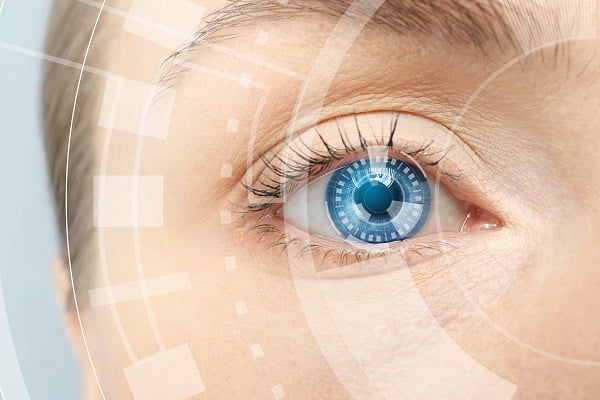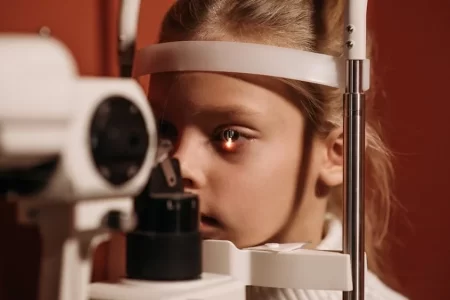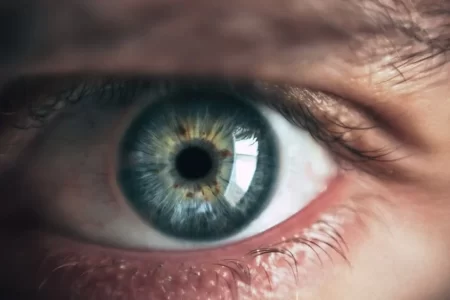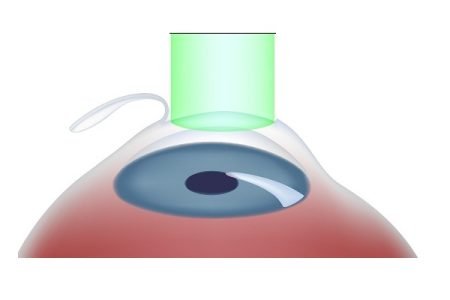What is Myopia or Nearsightedness?
- Updated on: Jul 15, 2024
- 3 min Read
- Published on Oct 3, 2019


Myopia or nearsightedness is a progressive eye disorder. It is a common type of refractive error of the eye. It is a condition in which people face difficulty in seeing far objects and usually the far vision is blurred.
They generally face difficulty in seeing blackboard and TV screen clearly and read books and see objects which are not closer to their eyes.
How does myopia develop?
Eyeballs are too long in myopia which is considered to be one of causes of nearsightedness. Because of this, light rays coming from the object do not focus directly on the retina of our eyes. Instead, light rays bend when they pass from cornea and the lens.
Myopia is also caused by too curved cornea and too thick lenses or due to a combination of these two factors.
Genetic factor is considered as one of the causes or risk factors for shortsightedness. The risk of getting myopia for a person is increased if both the parents have myopia but not if only one parent is affected.
Myopia is a common condition of the eye which may occur due to too much use of computers, mobile phones, TV, and lack of outdoor exposure. Environmental stress is also linked to myopia.
It is a progressive disorder and worsens with time. According to progression, the stages of myopia are categorized as:
Mild- A person is mildly myopic and the power of lens required to correct it falls between -0.25 to 3 D.
Moderate- Myopia progresses in this stage and the power of lenses increase and the range is -3.25-6 D.
High- A person’s vision gets fully blurred and he is not able to see faces and read anything clearly and the vision loss is more severe.
Nearsightedness is a commonly occurring eye focusing disorder which affects nearly 25% of the Americans. Researchers also found that the cases of myopia increased to 66% from 1971 to 2004 in the US.
Warning signs of myopia
There is no alarming sign and symptom for myopia as such. Difficulty in seeing nearby objects and blurred vision affecting day to day life of a person is one of the major noticeable signs of myopia. Other signs and symptoms of myopia include:
- Eye strain
- Headache due to strain in the eye
- Squinting of the eyes to see things clear
- Feeling fatigue in eyes while playing sports and driving
- Strains in eyes while focusing on far objects for too long to see them clearly
The degree to which your eye is affected by the disorder is tested by the ophthalmologist. A treatment is provided to control the myopic condition based on the diagnosis.
What complications can you face due to myopia?
Myopia is associated with various complications leading to other eye disorders when it progresses. Various complications that may occur due to myopia are as follows:
Cataract
Cataract is an eye disease in which the natural lenses of the eye become cloudy leading to impaired, cloudy or blurred vision. It is mostly related to ageing but is seen that a myopic person has higher chances of getting cataract or cataract may develop earlier in such a person.
Detached retina
Nearsightedness increases the risk of retinal detachment in a person. The more severe myopia is the higher is the risk of retinal detachment. If retina is detached from the eye surface, it may cause permanent vision loss.
Glaucoma
Glaucoma is usually caused by the development of high pressure in eyes which damages the optic nerve causing vision loss. It is seen that if a person has myopia the chances or risk of getting glaucoma increases twice or thrice.
How is myopia treated?
The major treatment options for myopia include:
Glasses
The power of glasses is prescribed by an ophthalmologist after eye examination.
Lenses
Contact lenses are put directly in the eyes. Various types of contact lenses are available in the market.
Surgery
Laser assisted surgeries are used to correct the curvature and structure of the cornea and treat myopia. Various surgeries are:
- LASIK (laser-assisted in situ keratomileusis)
- PRK or Photorefractive keratectomy
- Orthokeratologyor CRT
- Cataract surgery
Treatment of myopia saves the rest of the vision of your eye from damaging. It makes the daily life of the affected person easy so he or she can do their daily activities without any difficulty in vision.
Fast facts about myopia or nearsightedness
- More than 80% of Urban Asian children suffer from myopia.
- According to World Health Organization, by 2020 the myopic population will become 2 billion.
- In 1972, there were around 25% myopic people in the US and in 2004 the percentage increased to 41.6% among the people aged between 12 to 54 years.
- In ‘hunter-gatherer’ societies the incidences of myopia is very less that is nearly 1% as they are exposed to environment, doing little works and do not spend a lot time indoor near TV or with mobile phones.
- In china, 90% of college students have myopia.
- Myopia prevalence has increased rapidly in East and South-East Asia in the last 50 to 60 years, particularly in Singapore, Japan, Hong Kong, china and Korea.












